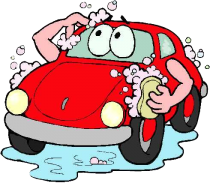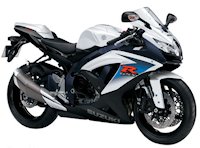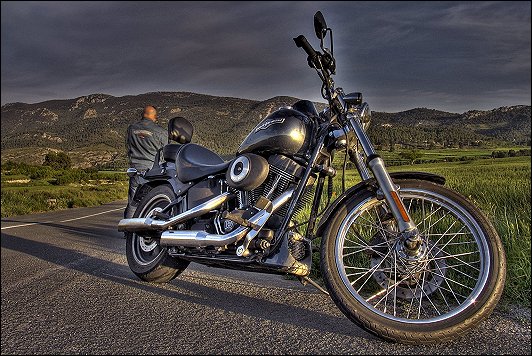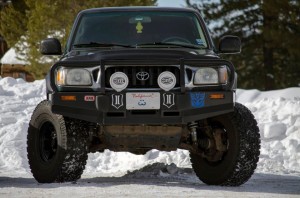
Riding season is on the horizon. And you’re pumped. You’re going to get your hog out and get back to doing what you’ve been itching to do all winter. Ride like the wind!
Of course, we’re as excited as you are. But we also want to remind every rider that their priority is safety. Maybe you did everything right before storing your bike for those cold winter months, but now there’s spring motorcycle preparation tasks to tackle.
To get the best out of your hog for the next few months and to protect yourself and those on the road around you, here are six things you should do to prepare your motorcycle for riding season.
Do a complete evaluation. Everything from lack of use to cold temperatures can impact your hog’s delicate fuel system. Replace filters as needed. Get your tank, fittings and lines examined. If you have fuel stabilizers, look for stratification or gunk…..
Here are the 1995-2004 Toyota Tacoma top 5 tips that reduces repair costs and will give you great performance for the life of your vehicle. The first generation Toyota Tacoma is getting older and repairs are inevitable, however, the experience of owning one, if properly maintained, will extend the life of your vehicle. I have owned a few of them and put well over 300,000 miles on both, without any major repairs.
Regular scheduled maintenance: According to ACTONTOYOTA.com for the 1995-2004 Toyota Tacoma, it gives you all the maintenance intervals which reduces repair costs, for every 5,000, 15,000 and 30,000 mile intervals. By following the scheduled maintenance intervals, you will eliminate costly repairs, like, the engine, transmission or drivetrain problems, which could lead into the thousands of $$$$$ in repairs. Parts can be expensive from the Toyota dealer and shopping other locations like AUTOPARTSWAREHOUSE.com or ROCKAUTO.com, can save you anywhere from 50-70% off of dealer pricing. Servicing your vehicle at a Toyota….
The 1990-2002 Honda Accord timing belt replacement procedures are covered pretty thoroughly in this video, with very clear video on each step along the way. The video also covers the tools needed to make it as simple as possible to do. Although repairs are inevitable on this 6th generation Accord, especially the timing belt, you will get the most out of the vehicle by following the scheduled maintenance intervals, especially for the timing belt replacement.
Although the 1990-2002 Honda Accord video covers all 12 years of the model, the steps in the video should be the same for all the 6th generation engines and the different horsepower variations for the 2.3L, 2.9L and the 3.0 L Engines.
Some of the key tips on the Timing Belt Replacement Procedures are LINING UP THE TIMING MARKS ON BOTH THE CRANKSHAFT AND CAMSHAFT PULLEYS, AS WELL AS THE TENSIONERS BEING TIGHTENED AND THE BELT PLAY BEING JUST RIGHT.
The 1990-2002 Honda Accord timing belt replacement video is a great do-it yourself video, but it would not….
From the 318i to the M3, the E36 BMW is loved by many enthusiasts. It’s a style that has transcended the generations. With most of the cars from that era coming up on being 20 or more years old, it is make it or break it time for the engine and drivetrain. These German cars will keep on going well past 200,000 miles, but not without essential maintenance along the way. Here are five tips that will help you reduce repair costs and deepen your love for your BMW without shortening your pockets.
1) Regular Maintenance
While consistently checking your oil, changing out the fluids, and other types of general maintenance may seem obvious, owners forget how essential these little tasks are. Your E36 engine is an orchestra, performing a grand piece whenever it turns over. If all the fluids and filters aren’t attended to properly, something bad is sure to happen. The outcome of this – costly and….
Many people think they must turn to a car dealer for car detailing to get the immaculate cleaning they want for their vehicle. Fortunately, this isn’t the case. With the right guidance and instructions, you can complete many of the same tasks on your own at home. All you need is some time and patience.

Wash in the Right Order
Washing your car in the right order will give you the meticulous shine you are looking for. Start with the wheels so you don’t splash water onto your already washed car body. Move on to the painted portions of the car, followed by the interior. Finally, wash the glass.
Use the Proper Drying Material
Some people use old cotton rags to dry their car, but this is a major mistake. Instead, choose waffle weave microfiber, which is the preferred fabric of the professionals. This material is gentler on your car’s finish and won’t create unseen scratches that affect the shine of….
I had a 2009 Suzuki GSX-R750 motorcycle, and, as an ex-racer and general tinkerer kinda guy, I of course change my own oil. After all, HOW HARD CAN IT BE?

Well, on the GSX-R750, it sounds pretty easy when you read the owner’s manual: you start by removing the right-side fairing. The manual lays this out in great detail: it says “remove right side fairing”. How hard could THAT be?
There are SEVEN (7) different kinds of fasteners that hold that fairing on. That’s right seven KINDS. If I remember correctly, it’s a total of 10 or 11 fasteners. Two or three of them are friction plugs (plastic knobs on the bodywork that press into rubber rings mounted in the frame)–that you can’t see. There are at least 3 different kinds of the pop-in plastic fasteners (well-hidden), and a couple of different thread sizes and shank sizes of Allen screws. If you could see all of them, it’d be pretty easy.
….
The winter of 2014 has been unkind to many, many Americans. From major snow storms in the north to crippling ice storms in the south. The temperatures have been the coldest we have seen in 30 years. I would bet that you certainly don’t want to get out in the cold to repair your motorcycle.
So, how do you beat the winter blues? One idea is to dream about the warmer days just around the corner. You know, the kind of day where you can saddle up on your motorcycle, take it for a much needed long cruise and enjoy the freedom that only the open highway can provide.
Here’s a nice video that might get your juices flowing for the nice, warm days ahead. It was the start of a Motorcycle Charity Rally recorded this past summer in Plano, Texas:
So, why not take advantage of the cold days now so you can repair your motorcycle and be ready for the spring days that are just a few weeks ahead. If you….

 Shop Store
Shop Store















